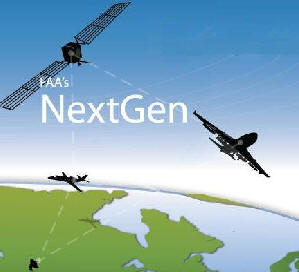|
|||||||||||
|
|
|
|||
|
By Jim Douglas |
||||
 |
May 28, 2010 — The
Federal Aviation Administration (FAA) announced the performance
requirements for aircraft tracking equipment that will be required under
the Next Generation Air Transportation System, or NextGen. The avionics
will allow aircraft to be controlled and monitored with greater
precision and accuracy by a satellite-based system called Automatic
Dependent Surveillance - Broadcast (ADS-B).
"We have reached a
major NextGen milestone," said U.S. Transportation Secretary Ray LaHood.
"This technology represents another step forward in our ability to make The final rule, developed with extensive input from the aviation community, requires aircraft flying in certain airspace to broadcast their position via ADS-B by 2020. The rule mandates that the broadcast signal meet specific requirements in terms of accuracy, integrity, power and latency. |
|||
|
|
||||
|
"This rule gives
the green light for manufacturers to begin building the onboard
equipment that will allow our air traffic controllers to know where
aircraft are with greater precision and reliability," said FAA
Administrator Randy Babbitt. "That is one of the key elements of NextGen
that will improve the safety and efficiency of flight."
Additional ADS-B
services should allow pilots to view cockpit displays to see the
location of other aircraft in the sky around them. ADS-B displays are
envisioned that will show pilots where they are in relation to bad
weather and terrain - even at night or in conditions with poor
visibility - and provide flight information, including temporary flight
restrictions, which allow pilots to plan safe, more efficient routes.
Some of this
information is now being broadcast free to aircraft equipped with ADS-B
in the Gulf of Mexico, South Florida and in the airspace above |
||||


